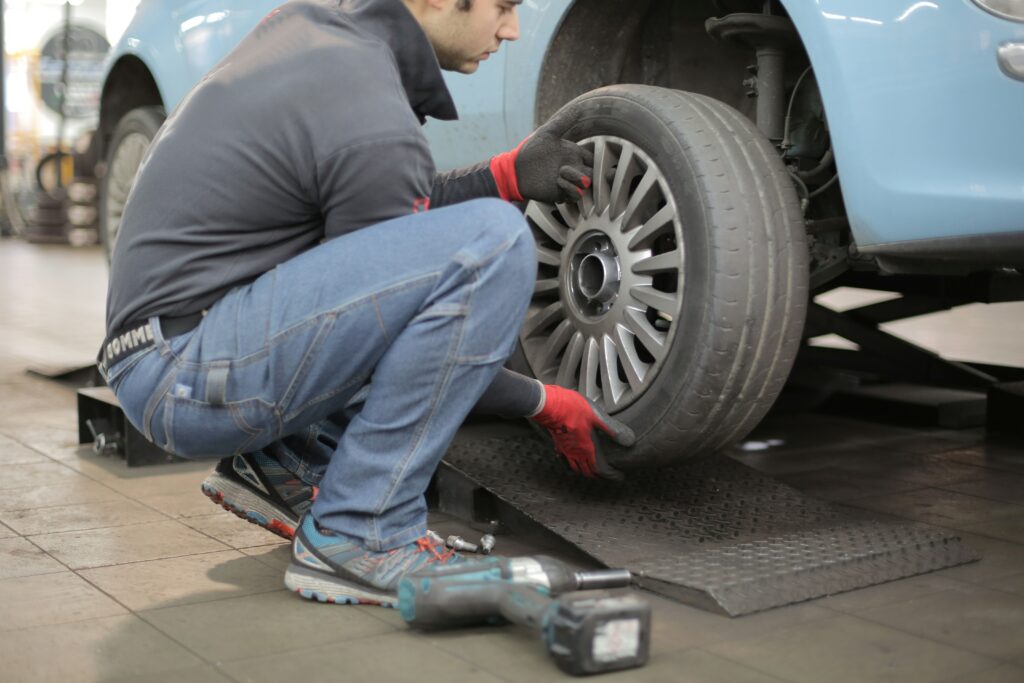
How Long Can You Drive on a Broken Tire Belt?
Knowing How long can you drive on a broken tire belt will give you an opportunity The safety and reliability of our vehicles depend heavily on well-maintained tires. However, unexpected tire issues can arise, such as a broken tire belt. In this article, we will estimate the risks associated with driving on a broken tire belt, the warning signs to look out for, and the recommended actions to take in such a situation. Let’s dive into the question: How long can you drive on a broken tire belt?
How Long Can Your Car Go Without Getting Maintenance?
Regular maintenance is crucial for the longevity and performance of your vehicle. Neglecting maintenance can lead to various issues, including tire problems like a broken tire belt. It’s important to address the issue promptly to minimize risks.
Understanding the Tire Belt
The tire belt, often referred to as the steel belt, is a critical component within the structure of a tire. Located beneath the tread, this reinforced layer is typically made of steel or other similar materials. Its primary function is to enhance stability and prevent excessive expansion of the tire under pressure. The tire belt acts as a barrier between the road and the tire’s internal layers, such as the plies and inner liner.

How Long Can You Drive on a Broken Tire Belt?
Recognizing the Warning Signs
Identifying a broken tire belt can be challenging, as it may not be immediately obvious. However, there are several warning signs that can indicate a potential issue:
- Vibrations: Pronounced vibrations, especially at higher speeds, may suggest an imbalance caused by a broken tire belt.
- Uneven Tire Wear: Inspect your tires for irregular tread wear patterns. Excessive wear on specific sections could indicate a broken belt.
- Bulges or Blisters: Check for bulges or blisters on the tire’s sidewall or tread. These abnormal protrusions can be a result of internal damage caused by a broken belt.
- Noise: Unusual noises, such as thumping or thudding sounds while driving, may indicate a broken tire belt.
What Is the Recommended Replacement Interval for a Tire Belt?
Tire manufacturers generally recommend replacing tires based on tread wear and age rather than specifically mentioning the tire belt replacement interval. However, it is crucial to regularly inspect your tires for signs of wear, including the condition of the tire belt. It will give you an indication how long you can drive on a broken tire belt.
Remember that the recommended replacement interval for a tire belt may vary depending on the tire manufacturer, tire type, driving conditions, and individual factors. It is always best to consult the tire manufacturer’s guidelines and seek professional advice when in doubt.
Driving on a Broken Tire Belt
Assessing the Risks:
Driving on a broken tire belt is not recommended due to the potential risks it poses to your safety and the well-being of your vehicle. Here are some associated risks to consider:
- Reduced Traction: A broken tire belt compromises the tire’s ability to maintain proper traction, particularly in adverse weather conditions. This can lead to reduced control and longer braking distances.
- Increased Blowout Risk: Ignoring a broken tire belt can subject the tire’s structure to excessive stress. Over time, this stress may result in a sudden blowout, leading to a loss of control over the vehicle.
- Additional Tire Damage: Neglecting a broken tire belt can cause further internal tire damage. This damage may extend beyond the belt, affecting other crucial components and potentially resulting in costly repairs.
Taking Action:
If you suspect a broken tire belt, it is essential to take immediate action. Follow these steps:
- Safely Pull Over: As soon as you notice any warning signs, find a safe location to pull over, away from traffic.
- Inspect the Tire: Carefully examine the tire for visible signs of a broken belt, such as bulges, blisters, or irregular tread wear. Exercise caution, as a tire with a broken belt may be under increased internal pressure.
- Seek Professional Assistance: Contact a tire professional or a roadside assistance service. They can provide expert advice and help assess the severity of the situation.
- Consider Tire Replacement: Depending on the extent of the damage, it may be necessary to replace the tire. A professional can guide you in selecting the appropriate replacement tire for your vehicle.

What is the best tool for testing the performance of your car?
The best way is the one where you don’t get unnecessary miles on your odometer. If you seek the opportunity to examine your automobile while driving, the extraordinary device from Germany, Mileage Blocker is at your service. Testing your automobile is the key to scheduling maintenance. The Odometer blocker stops counting kilometers unconditionally in all control units unconditionally. Usage of the device on public roads is prohibited, it is not created for deceitful purposes.
Takeaway
Driving on a broken tire belt is not worth the risk it poses to your safety and the condition of your vehicle. Recognizing warning signs, understanding associated risks, and taking timely action are vital for a safe driving experience. Prioritize regular maintenance and vigilance to prevent tire issues, ensuring optimal vehicle performance and well-being.




